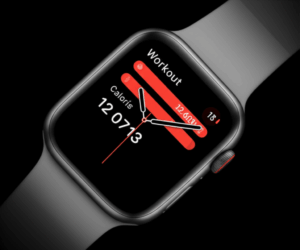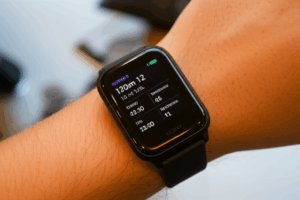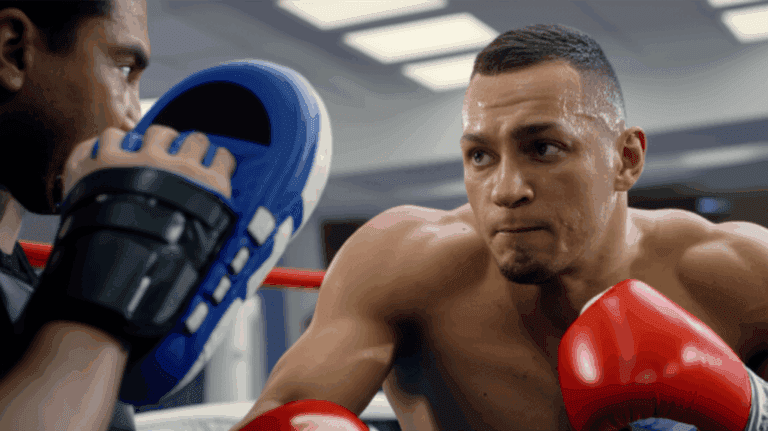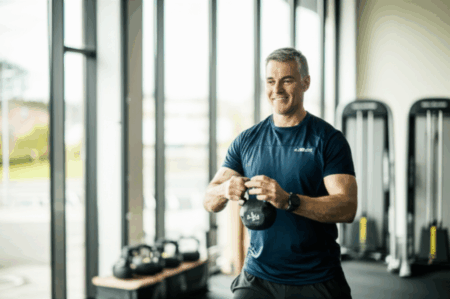Oleksandr Usyk, the Ukrainian boxer who has conquered both the cruiserweight and heavyweight divisions, is known for his exceptional skills, relentless stamina, and precise power. But how does he consistently outperform opponents who often have a size and weight advantage? The answer lies in his unique and demanding training regimen. Several sources reveal the secrets behind Usyk’s success, showcasing his dedication, unconventional methods, and the science-driven approach of his training team.
The Dawn of a Champion: Early Morning Rituals
Usyk’s day begins early, often with spiritual grounding. He starts with prayer and Bible recitation, setting the tone for mental discipline and focus. This practice cultivates mental fortitude, an essential attribute for a world-class boxer.
A typical day involves three main sessions:
- 4:30 AM: Wake up
- 5:00 AM – 6:30 AM: Early morning training session
- 7:00 AM – 9:30 AM: Breakfast and Recovery
- 10:00 AM – 11:30 AM: Mid-morning training session
- 12:00 PM – 1:30 PM: Lunch and rest
- 2:00 PM – 5:30 PM: Afternoon training session
- 6:00 PM: Dinner
- 8:00 PM: Relaxation
- 9:00 PM: Sleep
Cardio: Building the Engine
Cardio is a cornerstone of Usyk’s training. While the exact amount of running varies, his cardio regime is diverse, incorporating:
- Running
- Jumping rope
- Swimming
- Rowing
- Ladder drills
- Sprint movement work
This varied approach targets different muscle groups, enhancing overall strength and endurance. Ladder drills and sprint work develop explosive power and agility, crucial for quick movements in the ring. Swimming improves cardiovascular fitness and aids recovery.
Usyk’s trainer, Egis Klimas, revealed some extreme examples of Usyk’s dedication, such as cycling 45 kilometers in 100-degree heat and swimming one kilometer in a pool for five hours the day before a press conference. He has also been known to hold his breath underwater for extended periods to enhance lung capacity and mental focus.
Strength and Conditioning: Explosive Power
Usyk’s strength and conditioning program is designed to build explosive power and overall strength without sacrificing speed and agility. His strength coach, Jakub Chycki, emphasizes exercises that focus on the rate of force production. Usyk rarely moves slowly, instead executing the lifting portion of exercises explosively.
Key components of his strength training include:
- Olympic Weightlifting: Exercises like power cleans, snatches, and jerks to build explosive power in the legs.
- Kettlebell Training: Dynamic exercises like American kettlebell swings and split stance snatches to improve balance and strength.
- Plyometrics: Explosive movements like jumping, medicine ball slams, and rapid punches to develop power behind his punches.
- Non-Conventional Tools: Kettlebells, gymnastic rings, and resistance bands to improve balance, coordination, and body control.
- Core Stability: Exercises to strengthen the core, essential for power transfer and stability in the ring.
- Underwater Exercises: Training in a pool to improve lung capacity and mental focus.
Specific exercises include:
- Trap bar deadlifts
- Bench press
- Landmine punch
- Leaning single-leg landmine squat
- Good mornings
- Box squats
- Kettlebell swings
- Battle ropes
- Squat jump variations
- Lunge variations
Usyk’s coach also incorporates unconventional exercises to challenge his body in new ways. For example, he may stand on an elevated surface with one foot and hook a kettlebell around the other foot, then raise his knee. This strengthens the hip flexor muscles, reducing the risk of injury and improving mobility.
Boxing Training: Honing the Skills
Of course, boxing-specific training is a critical part of Usyk’s routine. This includes:
- Heavy Bag Work: Practicing strong combinations and power shots to strengthen fists.
- Pad Drills: Improving defense and quick reflexes.
- Sparring: Regular sparring sessions with multiple partners to mimic real fight conditions.
- Double-End Bag: Improving timing and accuracy.
- Speed Bag: Enhancing hand-eye coordination and speed.
- Movement Drills: Improving footwork and agility.
- Reflex Ball: Sharpening reflexes and reaction time.
- Shadowboxing: Practicing technique and footwork, often with added resistance.
Usyk often spars with a variety of opponents to prepare for different fighting styles. Some sources claim he has sparred with as many as 40 different people over 250 rounds in preparation for a fight.
Mental Fortitude: Visualization and Cognitive Training
Usyk believes mental preparation is as important as physical training. He uses brain training techniques to keep his mind sharp, such as the Schulte table, a grid of random numbers and colors that challenges reflexes, perception, and awareness.
He also employs unconventional cognitive training methods, such as juggling, to improve hand-eye coordination, movement, multitasking, and spatial awareness. Visualization techniques help him mentally prepare for fights, picturing different scenarios and how he will react.
The Importance of Recovery and Diet
While details about Usyk’s diet and recovery are not widely publicized, it is evident that he follows a nutritional plan rich in high-quality, nutrient-dense foods to fuel his intense training sessions. Given his increased size and strength in the heavyweight division, it is likely that he consumes a substantial amount of calories and protein to support muscle growth and repair.
Rest and recovery are also crucial components of his training regimen. Proper sleep, massage, and other recovery techniques help his body repair and rebuild after intense workouts.
Unique Training Elements
Several unique elements set Usyk’s training apart:
- Focus on Rate of Force Production: Emphasizing explosive movements in strength training to translate power to punches.
- Non-Conventional Training Tools: Using kettlebells, gymnastic rings, and resistance bands to challenge his body in new ways.
- Multiplanar Training: Incorporating movements in all three planes of motion to improve agility and stability.
- Underwater Exercises: Training in a pool to improve lung capacity and mental focus.
- Cognitive Training: Using brain training techniques like the Schulte table and juggling to sharpen his mind.
- Spiritual Grounding: Starting each day with prayer and Bible recitation to cultivate mental discipline and focus.
The Trainer’s Perspective: Jakub Chycki
Jakub Chycki, Usyk’s strength and conditioning coach, emphasizes the importance of training for instant reactions and maximum output. He designs workouts that train the body for the specific demands of boxing, focusing on speed, explosiveness, and agility.
Chycki incorporates non-conventional training tools and exercises to challenge Usyk’s body in new ways. He also monitors the velocity of his lifts to ensure he is maximizing power output.
Adapting to Challenges
Usyk’s training is not static; he constantly adapts to the challenges he faces. For example, when he moved from cruiserweight to heavyweight, he focused on increasing his weight without sacrificing speed and endurance. He achieved this through Olympic weightlifting exercises and a carefully planned diet.
He also adjusts his training based on his opponent. Before his rematch with Tyson Fury, Usyk revealed that he had “new secrets” and was studying their first fight to develop new strategies.
A Testament to Dedication
Oleksandr Usyk’s success is a testament to his dedication, hard work, and the innovative approach of his training team. His unique training regimen combines physical conditioning, mental preparation, and spiritual grounding to create a complete and well-rounded athlete. By pushing his body and mind to the limit, Usyk has established himself as one of the best boxers in the world.







